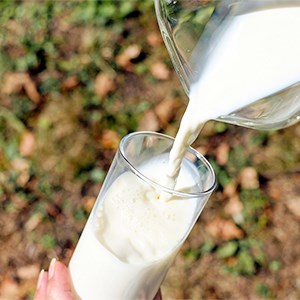This research program included six projects from SLU, Chalmers University of Technology and Research Institute of Sweden (RISE) and ran from 2019 to 2023. The aim of the project, that was funded by the Swedish farmers’ foundation for agricultural research (SLF), was to create conditions and generate new knowledge for more sustainable milk production.
The research program ranges from the individual cow to environmental impact on farm level, to benefits and new use of grass forage and to a combination of environmental and public health for diet recommendations.
The results
The most important results from the program are:
- The nutrient density of the diet is a suitable indicator for describing the health effects of the food, which can for example be included in a life cycle analysis (LCA).
- Based on national data, indicators for ecosystem services were developed. These show that the varied landscapes of farms with ruminants contribute many important ecosystem services.
- The Swedish dairy farms have, relative to other types of operations, significantly the highest soil carbon sequestration, in their soils. When this effect is considered, the climate impact from milk production is notably reduced.
- The sustainability of milk production, profitability included, is improved by increasing the lifespan of cows by approximately one year compared to today’s practice.
- Feed efficiency is a more reliable measure to use in breeding programs than methane emissions, to reduce climate impact from dairy cows.
- To describe the sustainability of the food system, life cycle assessments should be combined with other sustainability assessment frameworks.
- The trend towards ever larger and fewer units and higher milk yield per cow provides increased economic efficiency and lower climate impact per kg of milk, but creates problems for biodiversity and resilience. New technology such as type of system or size could enable greater variation in how milk production is carried out.
- More diverse milk production throughout Sweden can be a significant effort to increase Swedish food supply, in line with the Swedish Food Strategy. However, achieving this goal necessitates collaborative efforts from all stakeholders, as there is not one single solution that will fit all.
The projects in the program
Coordination of the program
SLU Future Food coordinated the program and the main task was to collect, develop and communicate synergies between the projects. This was for example done by regular workshops with the project researchers. A coordinator from SLU Future Food was also a part of the program committee established by SLF's board, gathering representatives from producer organisations, dairy industry and retail. The coordinator also worked as a support for the projects, for example by bringing in research support for shorter periods.
